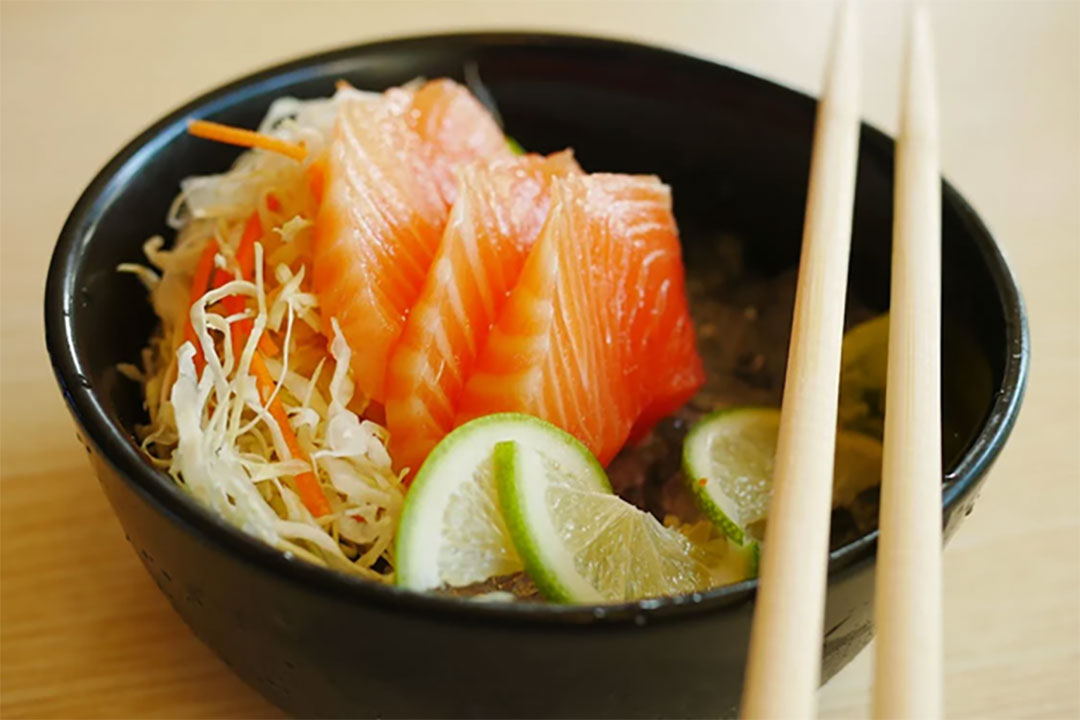
Amazonian Sacha Inchi Oil
Renowned as a “superfood,” Sacha Inchi, also known as the Inca peanut, is a plant native to the Peruvian Amazon. The oil extracted from its seeds is a potent source of Omega-3 ALA. It’s often used in traditional Peruvian cooking to add a distinctive, nutty flavor to dishes. In fact, organic Sacha Inchi oil has the highest Omega-3 ALA content of any edible oil, with a whopping 48 grams per 100 grams. It’s also rich in antioxidants and vitamin E, making it a healthy addition to your diet. In certain areas of the Amazon, Sacha Inchi oil is also used as a traditional medicine for various ailments. For example, it’s believed to have anti-inflammatory properties and can help with joint pain. The Omega-3 ALA in Sacha Inchi oil may also improve heart health by reducing the risk of heart disease.
Japanese Mackerel Sashimi
Mackerel, a staple seafood in Japanese cuisine, is an excellent source of DHA and EPA. Sashimi, a dish featuring thinly sliced, fresh raw fish, often utilizes mackerel due to its rich flavor and high Omega-3 content. DHA and EPA are essential for brain health, and in Japan, it’s believed that consuming mackerel can improve memory and prevent dementia. In addition to its benefits for the brain, Omega-3s may also improve skin health and reduce the risk of developing conditions like eczema and psoriasis. For a taste of traditional Japanese cuisine and a dose of Omega-3s, try some mackerel sashimi on your next sushi night.
Mediterranean Grilled Salmon
Salmon is universally recognized as a top source of Omega-3s. In Mediterranean cuisine, grilled salmon, often flavored with local herbs and lemon, offers a healthy and delicious way to incorporate these essential nutrients into your diet. The DHA and EPA in salmon may also have anti-inflammatory effects, making it a great option for those with conditions such as rheumatoid arthritis. Additionally, research suggests that Omega-3s can improve mental health by reducing symptoms of depression and anxiety. So not only is grilled salmon a tasty addition to your Mediterranean-inspired meal, but it may also benefit your overall well-being.
Icelandic Fish Oil
In Iceland, fish oil, especially from cod, has been a traditional part of the diet for centuries. Rich in DHA and EPA, it’s often consumed as a standalone supplement or used in cooking. The high concentration of Omega-3s in Icelandic fish oil makes it an excellent option for those looking to boost their intake of these essential fatty acids. Research also suggests that Omega-3s may have protective effects against certain types of cancer, making fish oil a potentially valuable addition to your diet. So next time you’re planning on cooking up some Icelandic-inspired dishes, consider incorporating some fish oil for an extra Omega-3 boost.
Indian Flax Seeds
Polynesian Tuna Poke Bowl
Tuna is another popular fish known for its high Omega-3 content. In Polynesian cuisine, it’s often featured in a poke bowl, a dish consisting of marinated raw tuna served over rice and topped with various vegetables and sauces. The DHA and EPA in tuna may help lower blood pressure and reduce the risk of heart disease. Tuna poke bowls are also a great source of protein, making them an ideal post-workout meal or a nutritious lunch option. With the added benefits of Omega-3s, this traditional Polynesian dish is not only delicious but also a smart choice for your overall health. So the next time you’re craving some fresh and flavorful seafood, consider trying a tuna poke bowl to satisfy your taste buds and nourish your body.
Cretan Wild Greens Salad
Dark leafy greens, such as spinach, are a surprising source of Omega-3s. In Cretan cuisine, wild greens like dandelion and chicory are often used in traditional salads. These wild greens have an impressive ALA content, making them a healthy addition to any diet. Research suggests that consuming a diet rich in Omega-3s can also improve eye health and reduce the risk of age-related macular degeneration. So why not try a Cretan wild greens salad at your next meal? Not only will you be incorporating a variety of nutrients into your diet, but you’ll also be experiencing the flavors and customs of this beautiful Mediterranean island.
Incorporating Omega-3-rich finds from diverse cuisines around the world is an exciting way to broaden your culinary horizons and improve your health. From Amazonian Sacha Inchi oil to Cretan wild greens, there are endless options to explore. So go ahead and take a journey through global gastronomy, discovering new flavors and reaping the benefits of essential Omega-3 fatty acids along the way. Next time you’re planning on cooking up some traditional dishes, consider incorporating some of these Omega-3-rich finds for a tasty and nutritious meal.
Comments
comments